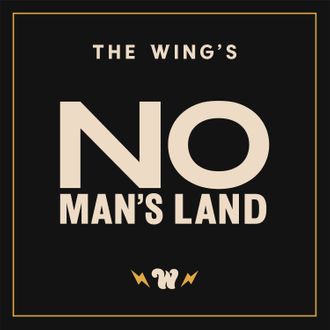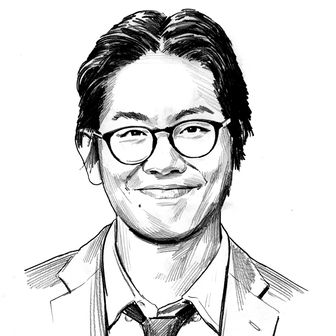
As a working historian, Alexis Coe has had an exceptionally interesting career. She has published an award-winning narrative history book (Alice+Freda Forever), appeared on documentary TV series (CNN’s American Dynasties, the History Channel’s Frontiersman), co-hosted an Audible Original series (Presidents Are People, Too!), and written for a variety of publications including The New Yorker, the Paris Review, and the New Republic. Which is to say, she’s made a wide variety of stuff for a wide variety of mediums, and she shows no sign of slowing down.
One of Coe’s latest projects is No Man’s Land, a podcast she’s leading as the in-house historian for The Wing, the women-focused network of social clubs and co-working spaces that’s had a fair bit of growth and attention lately. Over a six-episode first season, the podcast focuses on telling the stories of “women who were too bad for your textbooks.” Its debut episode, which dropped last month, revolved around the story of Stephanie St. Clair, also known as “Queenie,” a 1920s Harlem-based gambler who managed a criminal syndicate, resisted the Mafia, and used her power to advocate for the African-American community. Last week, the podcast entered its home stretch and published its fifth episode, about Ana Mendieta, the pioneering Cuban-American artist whose untimely death has long overshadowed her work. We spoke with Coe about the project, the hundreds of women she’d like to write about, and how she carved out a professional space for herself.
So, tell me about the show.
No Man’s Land is a podcast where I get to focus exclusively on women’s stories, but it’s a departure from what I’ve been hearing in history podcasts over the last couple of years. There’s BackStory, which I think of as the height of the genre with a lot of great reporting and sound engineering, and then there’s Revisionist History, which is very Malcolm Gladwell, but other than that, particularly when it comes to women, it’s a lot of retelling of basic biographies by non-experts.
I’m hoping to do more. In the Queenie episode, I got to talk to people who […] knew Queenie or who had already done oral histories on her, and then depart from that and investigate the sources. I think it shows people not only how you can engage with the story, but also how historians actually work. You hear me calling archives, tracking down somebody’s death certificate, hitting the pavement, knocking on doors, trying to think of everything I can after exhausting the archives. Also, with Queenie, I wanted to tell her story in a way that hasn’t been told yet. It had either been told in an academic text — which fills in the blanks quite a bit on context, but there’s such a limited reach when it comes to an audience — or, the flip side is a really sensational approach. There’s a 1997 movie called Hoodlum, in which Queenie is presented as a caricature. She’s just a prop, a woman at the table. And I wanted to know more about her.
How did you pick the mix of stories you wanted to pursue?
Some are new, others I had found over the past few years. I found Queenie’s story in an academic book by LaShawn Harris. The episode about Ida B. Wells was a story I had wanted to tell since 2013. At the time, I was researching my first book in Memphis, and that’s when I learned about a 29-year-old Ida B. Wells. What I saw was a 29-year-old woman writing diary entries about how she’s not sure she’s a good writer, how she’s not sure she’ll ever meet someone, how she’s overwhelmed by the expense of living as a single woman. She’s going from boarding house to boarding house. Her best friend is murdered, and that inspires her to investigate lynching. What I see is the unfolding of a moment of genius. How she came to it, what was at stake, and what happened after.
It was all so fascinating, but at the time, I thought, “This is really interesting, but it’s not really the story I’m telling right now.” And then, over the last few years, we saw Wells get her due to a certain extent. She had an “Overlooked” obituary in the New York Times and she’s become the patron saint of many journalists. So that episode goes back to all those things I saw, and really focuses on a four-month period that I don’t think I’ve seen done before. My goal with history has always been for someone to turn around and tell someone breathlessly what they just learned, as if it was an anecdote they would tell at a cocktail party. It doesn’t have to be perfect, but I just want them to interact with it. That’s how history can be meaningful to people who don’t necessarily think it’s for them.
Could we talk a little bit about being a historian? I think I still have a fairly old-school understanding of how you become one: You teach, you publish books, move up the ranks in academia, and so on.
When I was in graduate school, I certainly thought that I had just one choice, which was to go into academia. And I ended up being frustrated with the reach of conferences and papers. At the time, I happened to live across the street from the Brooklyn Historical Society. I didn’t really understand how public institutions functioned, but I figured I could go over and offer my services for free, however they might use them. And that’s exactly what happened — I absolutely fell in love with public history, mostly because of public engagement. I felt overwhelmed every time I saw someone engaged with oral histories that I had conducted or exhibitions I helped put together.
Soon after, a job at the New York Public Library opened up and I applied to be the research curator, got that position, and worked there for quite a few years before ultimately leaving to move back to California, which is when I wrote Alice + Freda Forever. And since then, I’ve had quite a lot of freedom to take on other projects. There’s this podcast. I’m a consulting producer on a forthcoming George Washington series with Doris Kearns Goodwin for the History Channel. I’m curating the ACLU nationwide centennial exhibition that will launch in 2020. I also just turned in a new kind of biography to Viking on George Washington. I was in CNN’s Kennedy documentary series last year, and I’ll also be in their series on the Bush family next year.
But, you know, no one handed me this freedom. I’m not independently wealthy. I’m driven by engagement and by curiosity, and it seems to have worked out so far.
I’m sure there are tons of women you haven’t yet written about but would like to. Who is the biggest one that’s on your mind?
Oh, there are literally hundreds. [Laughs.] It’s not quite a binder full of women, but there’s a spreadsheet of hundreds of women that I’ve been keeping since grad school that I’ve organized in various ways: race, class, state.
Someone I find particularly fascinating — who isn’t American, though I generally stick to American history — is a spy named Noor Khan. She had something called “chilblains,” which meant that her fingers were swollen, and yet she was the best at Morse code during World War II. She was a legitimate Muslim princess who was dropped into Nazi Germany, and she died in a camp. Her bravery has always been really overwhelming to me. I think about her a lot.





